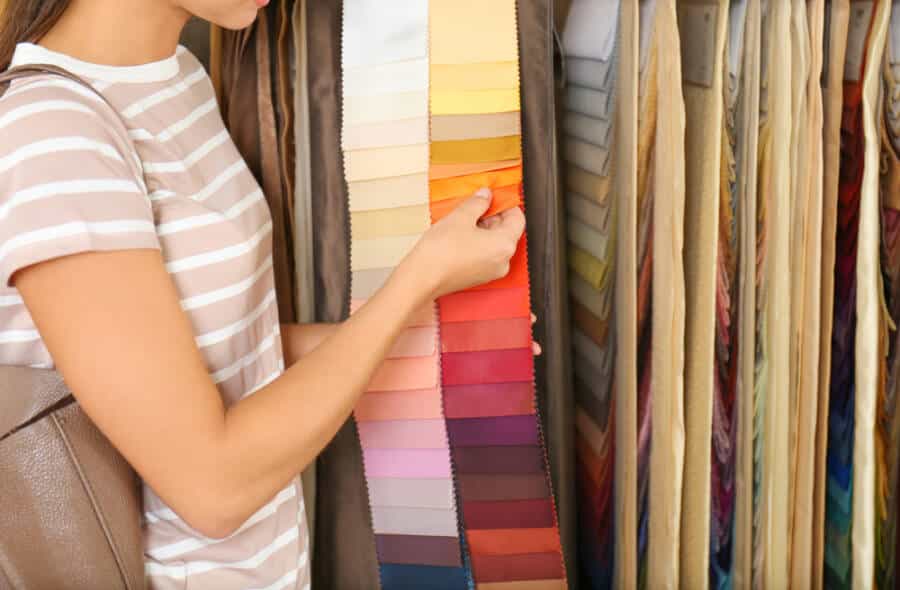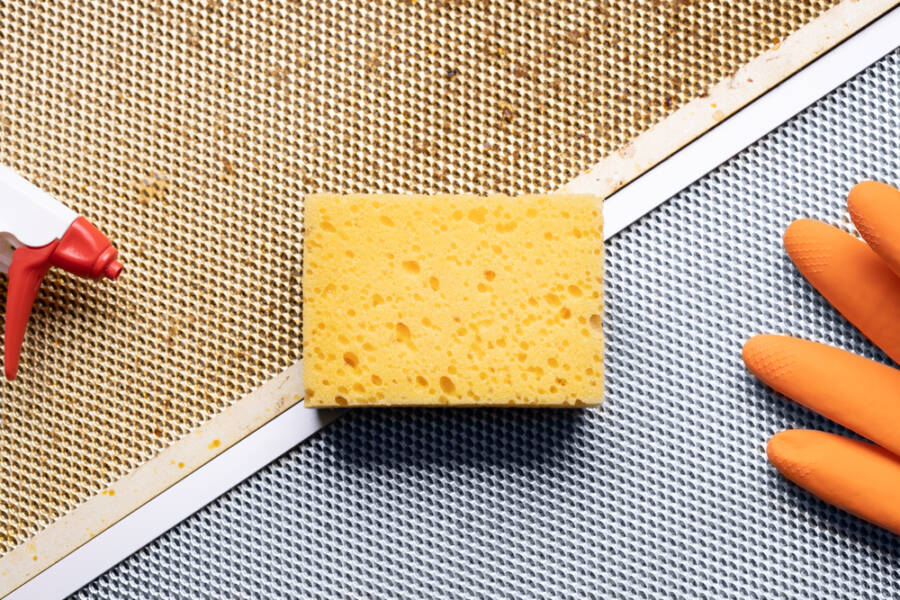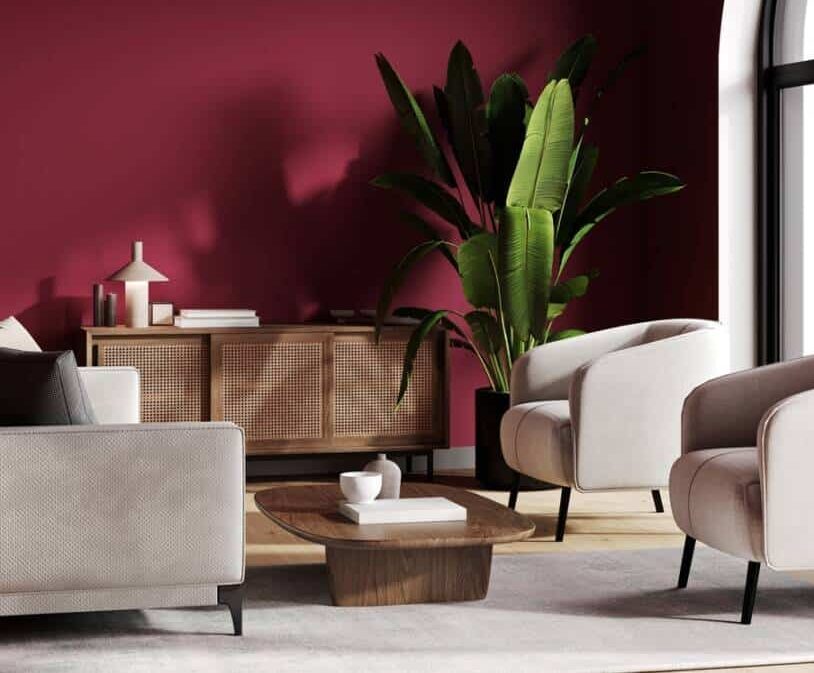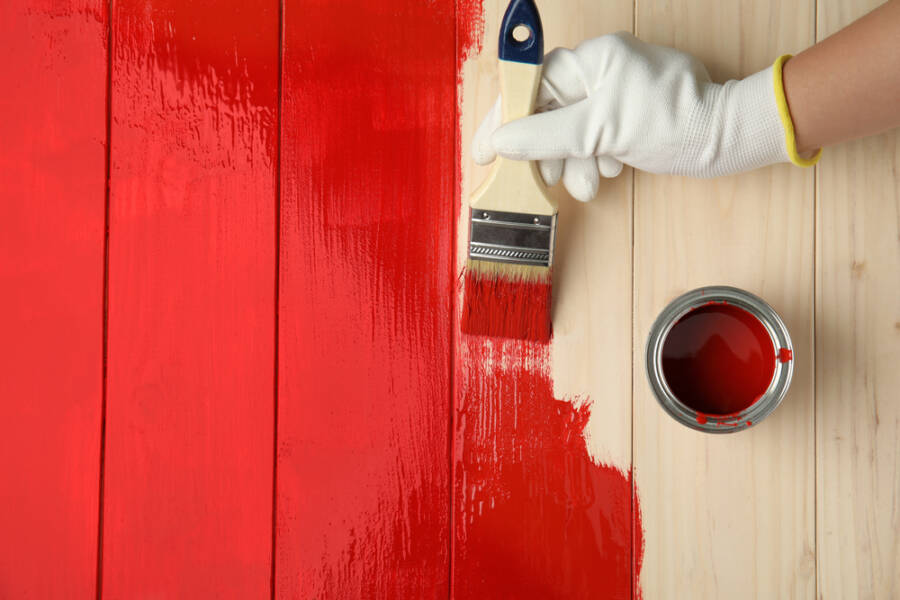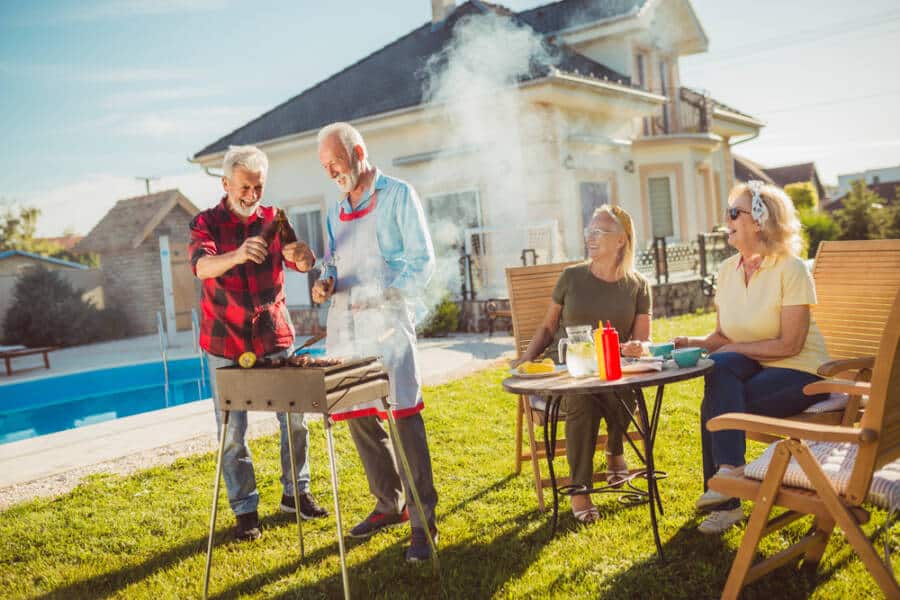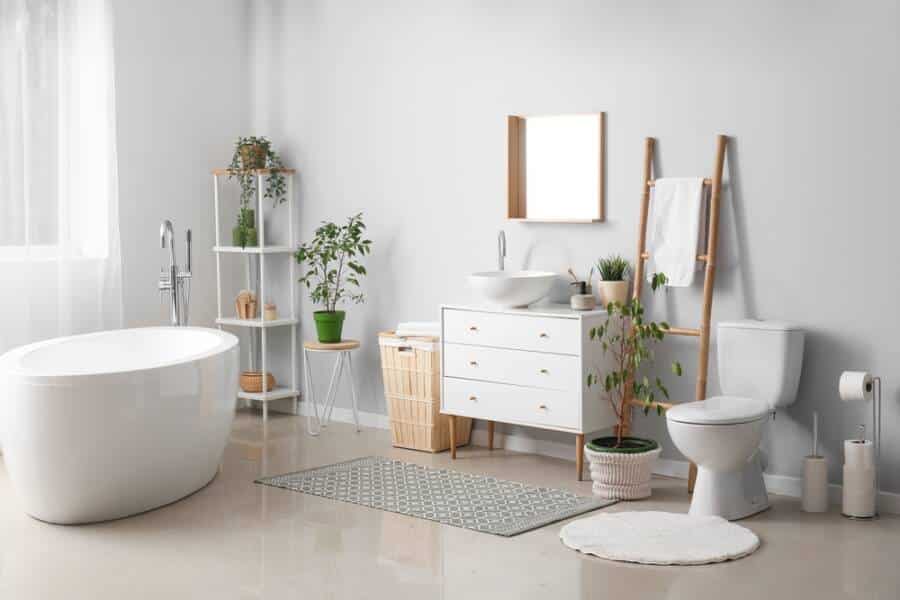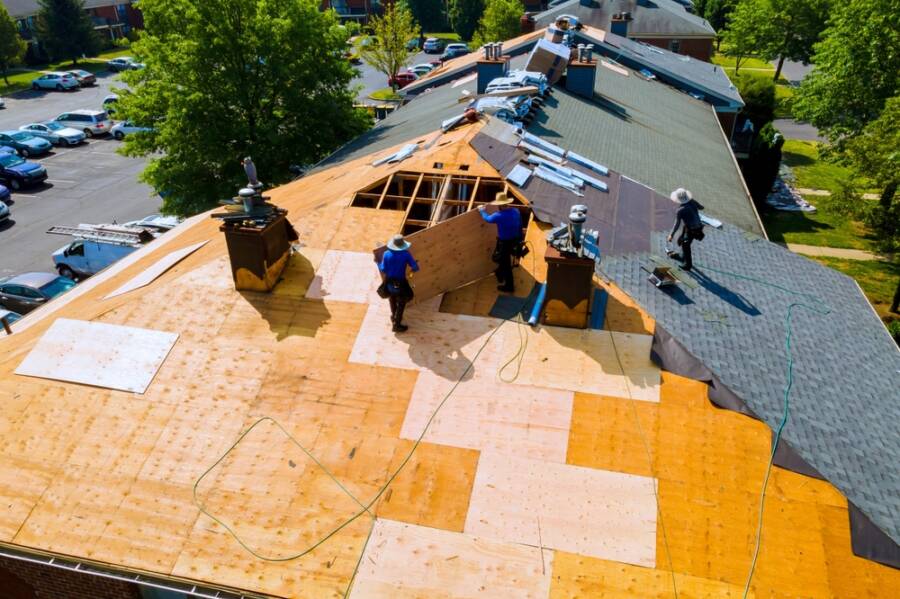Umbrella plants, or Schefflera actinophylla, are evergreen shrubs native to Australia and Indonesia. Commonly found in homes and offices around the world, they can be difficult to keep healthy and thrive if not properly cared for.
One of the most important aspects of caring for this species is understanding their preferences when it comes to being root bound.
This article will explore whether umbrella plants like to be root bound or not, as well as provide advice on how best to care for them.
Quick Answer: Do Umbrella Plants Like to Be Root Bound?
Schefflera plants, also known as umbrella plants, prefer to be root bound to an extent but not excessively. Signs that a Schefflera needs to be repotted include roots poking out of the drainage holes or signs of root rot. Repotting should occur every 2-3 years.
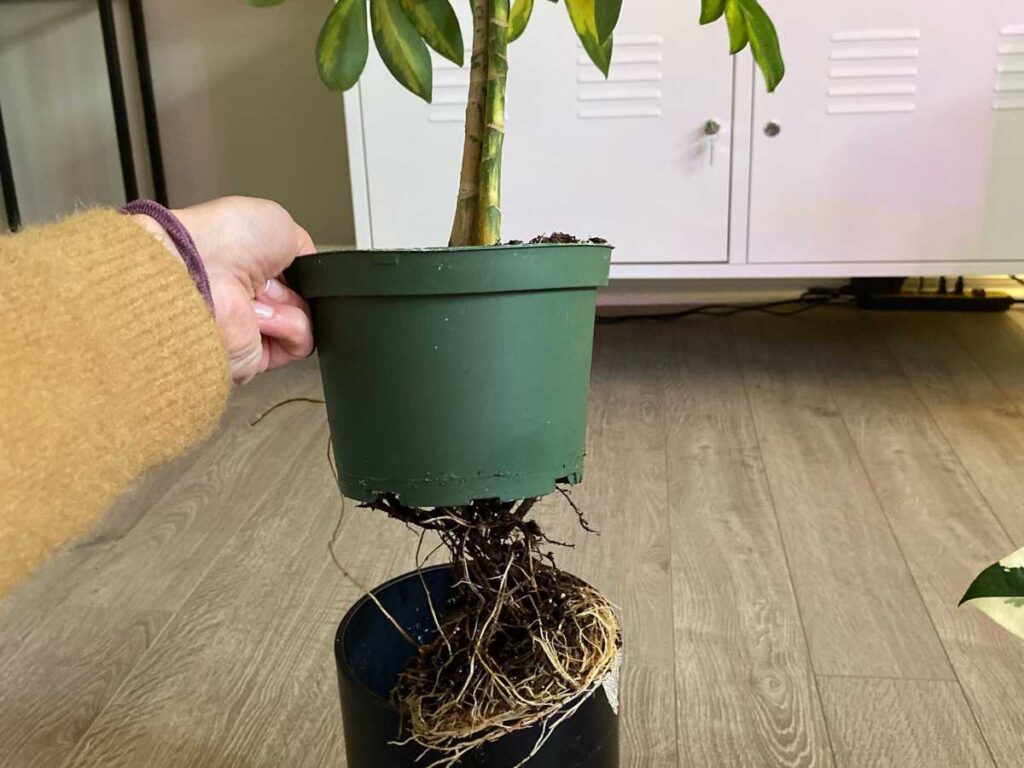
Understanding Root Bound
A root-bound plant occurs when its roots become too large for the pot it’s growing in; they grow around each other creating dense clusters within the container. As these roots continue to expand, they eventually form a solid mass at the bottom known as a ‘root ball.’
The lack of aeration within this mass reduces oxygen levels needed for healthy growth and stunts the further development of new feeder roots vital for nutrient absorption.
The Pros and Cons of Being Root Bound
Being root-bound means that your plant’s roots have become too large for its container – like when you need to repot a Schefflera plant or your umbrella plant. When this happens, it’s time to repot the plant into something larger; otherwise, its growth will be stunted. Four main consequences come with being root bound:
- Your plant won’t get enough oxygen – meaning it won’t grow as well and could even die due to lack of nutrition.
- You may not be able to water your plant, which leads to dehydration properly.
- The soil becomes compacted over time, leading to poor drainage.
- If left unchecked, these issues can result in disease and pests taking over your beloved houseplant.
On the other hand, there can also be some benefits from being root bound.
For example, if you want to avoid your Schefflera or umbrella plant getting any bigger, then keeping them in small containers might help limit their size and keep them looking neat and tidy.
Additionally, smaller pots tend to dry out faster than bigger ones, making it easier for those who forget about watering their plants on occasion (though this isn’t recommended!).
So while having a root-bound houseplant can cause certain problems down the line if left unattended, it doesn’t necessarily mean you should rush out right away and repot every single one of your plants.
Instead, assess each situation individually before deciding whether or not you need to repot your umbrella plant or another potted specimen.
How to Confirm if An Umbrella Plant Is Root Bound
The first step in diagnosing whether or not a plant is rootbound begins with removing the container from which it grows.
If you notice that there are roots growing out through drainage holes, this could indicate that the plant has become pot-bound; however, the best way to confirm this is by turning the plant upside down and gently squeezing the sides of its container.
Suppose you observe tightly intertwined roots around the exterior of soil mass. In that case, this confirms that the Schefflera is indeed rootbound.
To keep your Schefflera healthy, it will need to be re-potted into fresh soil every two years or so, depending on how quickly it grows.
Signs of An Umbrella Plant Needing Repotting
Root-bound plants are a common occurrence in the horticultural industry, with approximately 70% of all potted plants being root bound. Therefore, an umbrella plant that is root-bound must be repotted as soon as possible to prevent further damage to its health.
The most obvious sign of an umbrella plant needing repotting is when roots start growing out through drainage holes at the bottom of the pot or when they emerge from the topsoil.
In addition, if roots can easily be seen near the surface when looking inside the pot, this indicates that it may need repotting.
Other indications include water taking longer than usual to drain away and leaves beginning to yellow or drop off due to a lack of nutrients reaching them effectively.
When it comes time for repotting, use a quality potting soil mix specifically designed for indoor plants or a good-quality commercial potting mix formulated for cacti and succulents.
Be sure to choose a new pot that is only slightly larger than the one currently used so as not to shock the roots too much by giving them too much space suddenly; otherwise, transplant shock could occur, which would cause even more damage.
To ensure success, always make sure there are adequate drainage holes in both old and new pots; these should never be blocked up during transplanting.
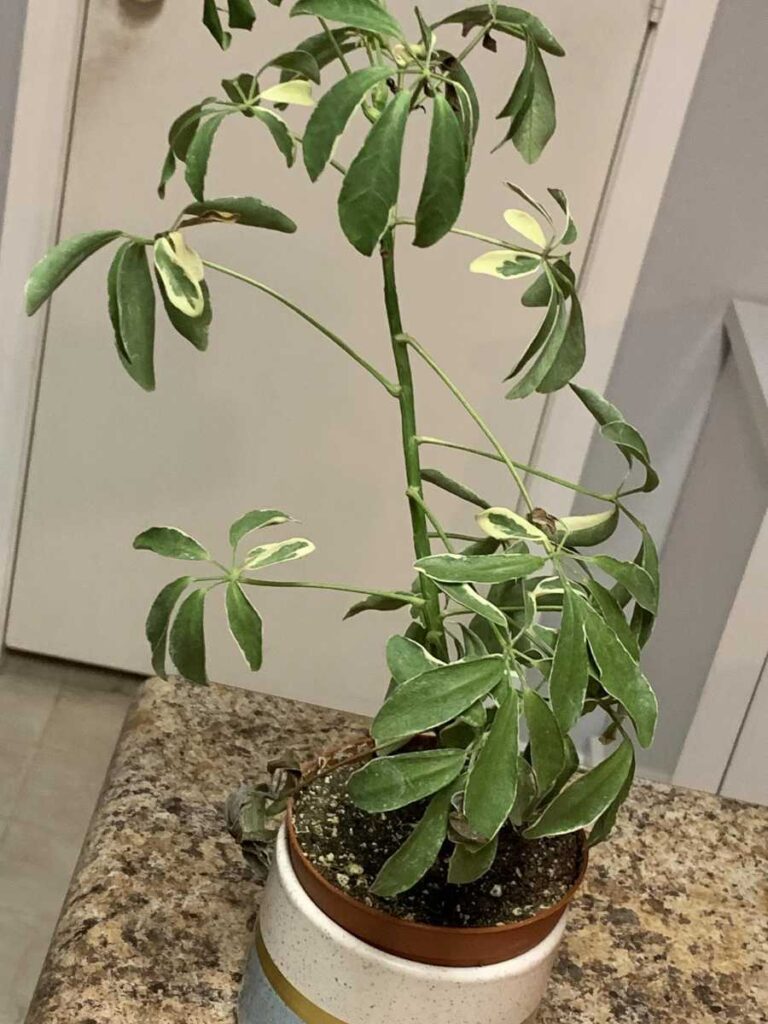
How to Choose the Correct Pot for Umbrella Plants?
A recent survey of gardeners revealed that 80 percent of potted plants die prematurely due to incorrect size or type of pot.
The most successful way to choose a pot for any plant, including Schefflera, includes considering three significant elements: drainage, root space, and aesthetics.
Drainage:
Drainage is critical when selecting a pot for your Schefflera; not all pots come with drainage holes, so be sure to purchase one that does.
Having adequate drainage prevents waterlogging and decreases the risk of diseases caused by too much moisture, such as root rot.
Drainage also helps keep soil temperatures cooler, which can improve the plant’s overall health.
Root Space:
Next, consider how much room the roots have inside the container – where there is limited space, growth slows down and eventually stops altogether if left unchecked.
To prevent this from happening, select a slightly larger pot than the current one – usually between two and four inches bigger, depending on age and size. This will give the plant enough space to develop before needing another repotting session later.
As well as providing more room for new roots to grow, replanting at regular intervals encourages better aeration around existing roots which helps them become healthier over time.
Aesthetics:
Finally, think about what you want your finished product to look like. Whether you prefer classic terracotta or something modern like concrete or metal, choosing a style that suits you and your environment ensures that your houseplant looks its best while still allowing enough space to thrive.
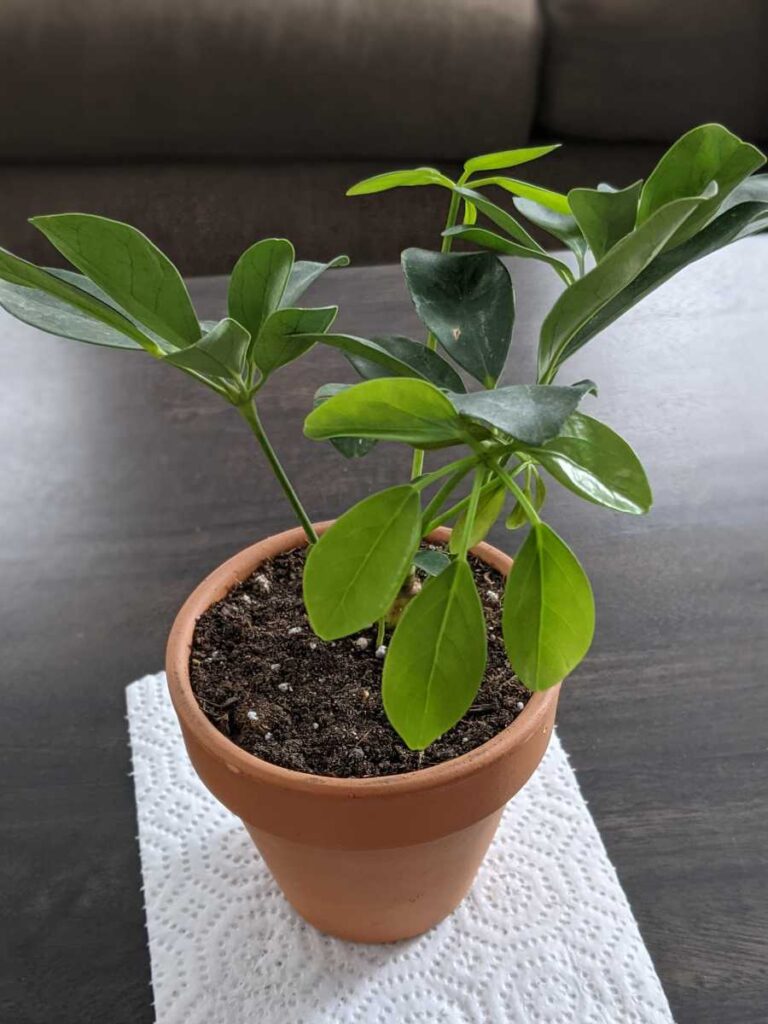
How to Make Sure an Umbrella Plant Does Not Become Root Bound
To ensure that your umbrella plant is able to thrive, there are several steps you can take to prevent it from becoming root-bound.
Firstly, choose a pot large enough for the size of the umbrella plant’s root system. A good rule of thumb is to use one or two sizes larger than its current container when repotting or planting out. This will give the plant plenty of room to spread its roots without overcrowding the soil.
Secondly, check on the health of the root ball every few months by gently shaking off some soil around it. If any circling roots appear at this time, carefully loosen them before adding more soil back into the pot.
Finally, consider using a deep pot with multiple drainage holes when planting outdoor specimens, as this will allow ample space for water retention while providing adequate drainage so that excess moisture cannot accumulate around the roots.
By taking these measures, your plant may be able to develop without being hindered by poor rooting conditions due to overcrowding or inadequate drainage.
How to Save a Rootbound Schefflera Plant?
When your Schefflera plant becomes root-bound, it’s time to take action to save it. Prolonged root-bounding can be fatal to the plant, so it’s best to take fast steps to remedy the situation. Even if the Umbrella plant can bear root-bounding, it’s wise to avoid letting it happen. You must act quickly as soon as you notice the roots are growing too large.
To save your root-bound Schefflera, you’ll need to repot it. Gather some necessary gardening tools such as sharp pruners, a pot of the right size, gloves, and a trowel. Here are the steps to follow for a successful repotting:
Start by taking a good look at the plant, the soil, and the pot. You’ll be able to tell how serious the root-bounding is, and whether the roots are coming out of the drainage holes and soil surface.
Now, it’s time to remove the Schefflera from the pot carefully. The roots will be fragile due to the root-bounding, so be careful. If it’s too difficult to take out, try pushing the soil out with your fingers or lightly shaking the pot. You can cut the pot with a sharp knife if it is plastic.
Once the plant is out of the pot, you can dip the roots and soil into a water bowl to loosen up the soil. Then, use chopsticks, a fork, or your fingers to untangle any knotted roots. Cut off any mushy, brown, or dark roots with a disinfected pair of pruners.
Before repotting, you’ll need to trim the extra roots from the plant. This will ensure it keeps the new pot growing. You can use the same old pot, but make sure to clean and disinfect it first.
Now, get a good potting mix. You can either buy a store-bought one or make one at home. Add the mix to the pot and make sure it’s aerated and allows for good drainage. Carefully place the plant in the mix and press it slightly. Don’t let the roots touch the bottom of the pot.
Once the plant is in its new home, water it generously. After a week or so, you can start watering it regularly, only when the topsoil is dry.
Your Schefflera will be thankful for the repotting and will start growing healthy, beautiful foliage again.
Conclusion
The root-bound state of a Schefflera plant can have both advantages and disadvantages.
It is important to identify if an umbrella plant is rootbound or not by looking out for signs such as stunted growth, yellowing leaves, wilting, and roots curling around the inside of the pot.
With thoughtful consideration towards re-potting needs and appropriate care taken afterward, you can maintain their Schefflera plants in a thriving condition.


